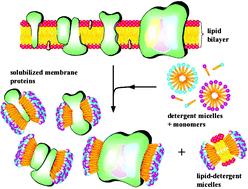Abstract
Chemistry has generally been associated with inorganic and organic syntheses, metal–organic composites, coordinate metal chemistry, catalyses, block copolymer, coating, thin film, industrial surfactants and small-molecule drug development. That is about to change. Chemistry will also expand to the discovery and fabrication of biological and molecular materials with diverse structures, functionalities and utilities. The advent of biotechnology, nanotechnology and nanobiotechnology has accelerated this trend. Nature has selected and evolved numerous molecular architectural motifs at nanometer scale over billions of years for particular functions. These molecular nanomotifs can now be designed for new materials and nanodevices from the bottom up. Chemistry will again harness Nature's enormous power to benefit other disciplines and society. This tutorial review focuses on two self-assembling peptide systems.

- This article is part of the themed collection: Nanostructured Assemblies

 Please wait while we load your content...
Please wait while we load your content...